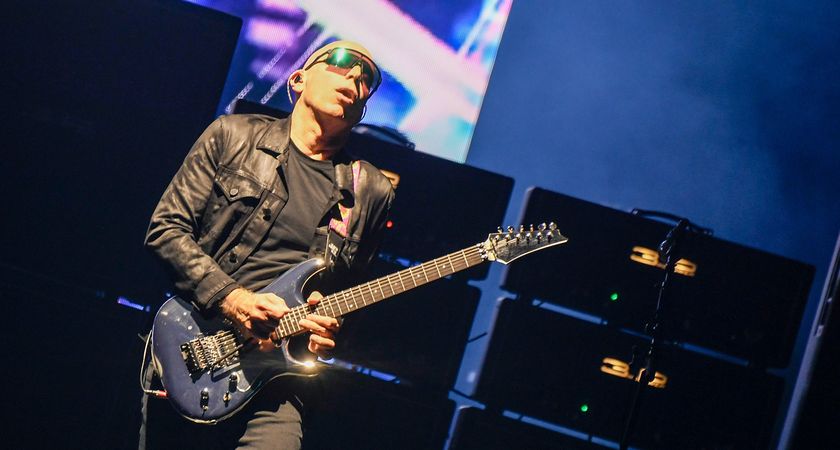In Deep with Andy Aledort: Part 2 of a Tribute to Mountain Guitarist Leslie West — Video

Last month’s column was dedicated to the incredible and highly influential playing of Mountain’s Leslie West, whose beautifully melodic phrasing, signature slow, wide vibrato, and rich guitar tone set the standard for blues-rock–style guitar of the highest order in the late Sixties and early Seventies.
West’s many disciples include fellow guitar gods Eddie Van Halen, Randy Rhoads, Jethro Tull’s Martin Barre, Pete Townshend, Warren Haynes and Ritchie Blackmore of Deep Purple. Blackmore has stated that Leslie’s phenomenal playing on “Mississippi Queen” redirected the course of Deep Purple’s music in an instant, ultimately resulting in the brutal power and hard rock intensity displayed on Deep Purple in Rock.
For Barre, Leslie’s gift to him of one of his late-Fifties Gibson Les Paul Junior guitars inspired the writing and playing on Jethro Tull’s most successful album in the band’s history, Aqualung. West was also instrumental in the development of the music recorded for the Who’s masterpiece, Who’s Next.
The band Mountain dominated rock radio in 1970 with their smash debut album, Climbing!, but true Leslie West fans know well that his solo debut, Mountain, preceded Climbing! by eight months, and was for many the introduction to his brilliant singing and guitar playing.
A solid effort throughout, the signature track from Mountain is the album’s side-two opener, “Dreams of Milk and Honey,” a song destined to become the centerpiece of every live Mountain show from 1970–72.
FIGURE 1 presents a 16-bar solo played in the style of “Dreams of Milk and Honey.” Akin to most blues and rock players, Leslie’s improvisations are based primarily on pentatonic scales, specifically alternating between E minor pentatonic (E G A B D) over bars 1–6 and 11–14, and A minor pentatonic (A C D E G) over bars 7-10 and 15–16. While playing his improvisations based on each of these scales, he remains rooted in standard “box” positions for each, using the 12th-position box of E minor pentatonic and the fifth-position box of A minor pentatonic.
My primary goal in crafting this tribute solo was to demonstrate Leslie’s solid melodic sense combined with his effortless but equally aggressive rhythmic drive. The lines all employ a combination of rhythms, featuring phrases formed by starting and ending with sustained notes, with steady 16th-note driven melodies placed in between, or lines that begin with a long stream of 16th notes that then culminate with heavily vibrato-ed quarter notes.
Get The Pick Newsletter
All the latest guitar news, interviews, lessons, reviews, deals and more, direct to your inbox!
In both cases, be sure to lean into the beat when playing these lines, using a robust fret- and pick-hand attack, along with a heavily distorted guitar tone, in order to best replicate the power Leslie always generates in his solos.
Guitar World Associate Editor Andy Aledort is recognized worldwide for his vast contributions to guitar instruction, via his many best-selling instructional DVDs, transcription books and online lessons. Andy is a regular contributor to Guitar World and Truefire, and has toured with Dickey Betts of the Allman Brothers, as well as participating in several Jimi Hendrix Tribute Tours.

“We had 15 minutes left, and it was time to go… I just started playing that riff. Then Lenny goes, ‘Whoa, what’s that?’” Lenny Kravitz guitarist Craig Ross reveals the serendipitous roots of a Kravitz classic

“The concept of the guitar duel at the end was just appalling”: Crossroads is an essential piece of '80s guitar lore, but not every guitar legend was a fan of the film










